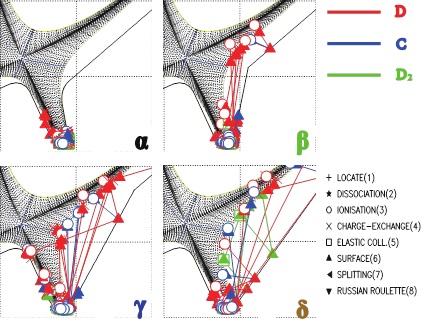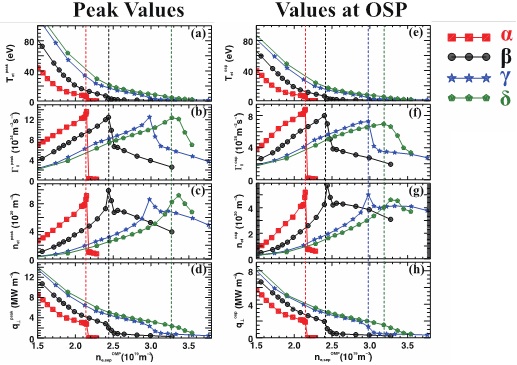
count: [2019-08-27] [Close]
Chinese scientists had a close look at the effect of divertor closure on plasma detachment for new divertor design of EAST by SOLPS and they found the larger the closure achieved, the smaller the neutral escape got.
This work was done by the research team with Institute of Plasma Physics, Hefei Institutes of Physical Science.
Divertor is one of the key components in Tokamak facility. Divertor “closure” refers to the extent to which neutrals recycled from the divertor target can escape the divertor region.
Through their research, they uncovered the neutral escape would become smaller if the closure got larger.
Moreover, in the design progress of EAST new lower tungsten divertor, it was clearly, according to the modeling results, that increasing the divertor closure could significantly strengthen neutral pressure in the divertor region, thereby improving the removal of divertor particles through pumping.
And they further found dissipate power over a large range of plasma densities would facilitate the access to the divertor plasma regime with high volumetric losses, thus reducing divertor target heat load and main chamber sputtering would be reduced with deuterium neutral density decreased, which may improve core plasma confinement.
Therefore, the team believed that increasing divertor closure could benefit divertor operation for EAST and may be used as one of the scientific metrics for the divertor design of future fusion device CFETR.
The research work was finished with the support and contributions from the rest of the EAST team and collaborators. This work was supported by National Key Research and Development Program of China; National Natural Science Foundation of China; Key Research Program of Frontier Sciences, CAS; National Magnetic Confinement Fusion Science Program of China. The numerical calculations in this paper were performed on the ShenMa High Performance Computing Cluster in Institute of Plasma Physics Chinese Academy of Sciences and on the supercomputing system in the Supercomputing Center of University of Science and Technology of China. (SI Hang reports)


The article link: https://iopscience.iop.org/article/10.1088/1361-6587/ab348f